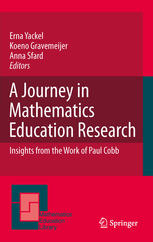

Most ebook files are in PDF format, so you can easily read them using various software such as Foxit Reader or directly on the Google Chrome browser.
Some ebook files are released by publishers in other formats such as .awz, .mobi, .epub, .fb2, etc. You may need to install specific software to read these formats on mobile/PC, such as Calibre.
Please read the tutorial at this link: https://ebookbell.com/faq
We offer FREE conversion to the popular formats you request; however, this may take some time. Therefore, right after payment, please email us, and we will try to provide the service as quickly as possible.
For some exceptional file formats or broken links (if any), please refrain from opening any disputes. Instead, email us first, and we will try to assist within a maximum of 6 hours.
EbookBell Team

4.3
8 reviewsThis book presents ideas developed by Paul Cobb and his colleagues that have significantly influenced the field of mathematics education over the past three decades. In this volume, they are brought together for readers to present a clear view of how the field has changed during that time. During his career Cobb moved from looking at a single child's mathematical reasoning, to a class learning a particular mathematical topic, to a group of school teachers, and to a school district with all its teachers, teachers' teachers and principals. It was his wish to make a real difference and his constantly revised understanding of what it takes to do so that dictated this gradual broadening of the unit of analysis. This development is presented in this book with the help of chronologically organized previously published papers, each of which represents a distinct stage in this intellectual journey and is preceded by a new commentary that sheds additional light on the processes of reconceptualization and thus helps the reader to understand the reasons, mechanisms, and outcomes of researchers’ constant pursuit of new insights. This book thus demonstrates how research develops and evolves when theory and practice are taken as mutually informing aspects of the researcher’s work. In this sense, the volume is relevant to audiences primarily interested in practical aspects of mathematics education as well as to those whose primary interests lie in theoretical developments.